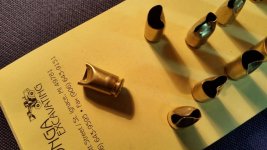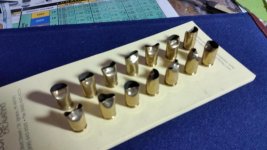NJM15
Member
Recently I have noticed some bulging about 3/16" above the rim
I am using starting loads , 155 gr Extreme lead, usually power pistol, stock barrel.
I have found bulges on range brass fired by early gen Glocks but never noticed it on my fired rounds. the only thing I can think of is having too tight crimps increasing the pressure.
any other ideas ?
thanks
I am using starting loads , 155 gr Extreme lead, usually power pistol, stock barrel.
I have found bulges on range brass fired by early gen Glocks but never noticed it on my fired rounds. the only thing I can think of is having too tight crimps increasing the pressure.
any other ideas ?
thanks




